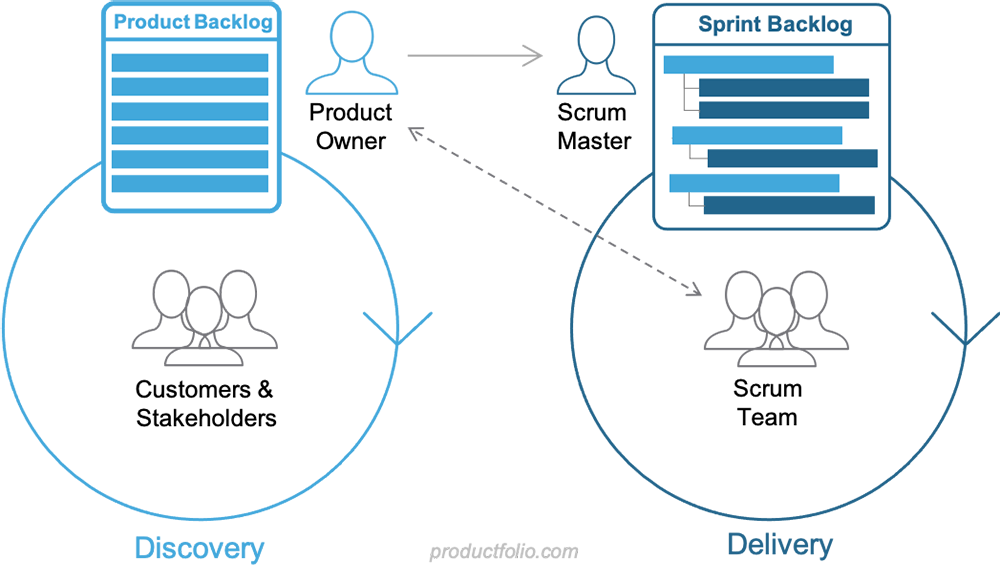What is an Agile Scrum Team?
Scrum is an agile framework where teams work collectively in order to achieve a specific goal and is majorly used by software development teams. Borrowing its name from a rugby team, scrum teams are encouraged to learn through experiences and self-organize themselves in order to effectively solve challenges while reflecting on both their strengths and weakness for purposes of continuous improvement. Agile is an umbrella term that incorporates incremental software development approaches.
A scrum team often doesn’t know everything at the inception of a project and has to evolve through experience by naturally adapting to fast-changing conditions. This compels the team to deliver products and cycles in short cycles or releases to allow for learning and improvement. Based on their mode of working, a scrum that consists of cross-functional teams also enjoys quick feedback and accelerated delivery of projects.
What is the Composition of a Scrum Team?
A scrum team typically consists of between five to nine members who closely work together under an environment that fosters high levels of communication to achieve the required product increments. Members pursue a common goal, adhere to similar rules and norms and show mutual respect among themselves. A scrum team comprises of a product owner, scrum master and the development team.

Product Owner
This is a team member who understands the customer’s needs and can translate what the customer requires back to the scrum team. The product manager should have an in-depth understanding of the business case for the product as well as which features a customer wants. Product owners have to closely collaborate with the team to ensure the product vision is being implemented according to plan.
Scrum Master
A scrum master helps to ensure the team remains committed to the project and business as well as get rid of any challenges that might limit a team’s productivity. They regularly meet with the team typically on a weekly basis to review work and deliverables. Scrum masters also organize critical meetings and events as well as inspire and motivate each team member.
Development Team
These teams are empowered by the organization to manage and organize their own work schedules. The resultant synergy improves a team’s efficiency and effectiveness in a scrum framework that doesn’t recognize titles for team members irrespective of the duties one performs.
Understand how Scrum Works
As earlier mentioned, scrum teams break large products into multiple small pieces that can be released within a short timeframe. Scrum teams plan for meetings at the beginning of the sprint where team members determine how many items they can comfortably commit to, then come up with a sprint backlog that entails a list of tasks that need to be accomplished. After completion of each functionality, scrum teams inspect and prepare themselves for the next task taking into account feedback and what has been learnt so far to minimize risk and reduce wastage. The cycle is repeated until the full product/service is completed.
During a scrum sprint, the team selects a small set of features which are developed from an idea right to a coded and tested functionality. After all features have been coded and tested, they’re collectively integrated into an evolving product or system. When scrum teams focus on the highest priority areas of functionality, businesses are assured of the highest returns on investment. The benefit of scrum is the software development team is left to use their own creativity to seek solutions to the problems at hand. This leads to higher customer satisfaction, faster innovation, smaller timeframe between an idea and delivery, as well as increased employee morale.
The scrum model views daily scrums as a way to synchronize the work done by team members as part of a review of a sprint. All team members including the scrum master and product owner should attend a daily scrum meeting which ideally should be no more than 15 minutes. During the meeting, members share what they worked on the previous day, intend to work on that day, as well as share any challenges experienced.
In scrum agile development, cross-functional teams work together and there’s no single overall leader that decides which person will handle which task and how a problem shall be solved. Scrum model involves handling of various project tasks in a series of sprints which are timed to last between a fortnight to a maximum of one month.
Approach to issues is decided based on the entire team’s input so everyone fully participates in taking an idea to the implementation stage. After a sprint has been completed, the team reviews the sprint and the product owner or stakeholder is presented with the new functionality in order for them to comment or provide feedback that could be incorporated in the next sprint.


